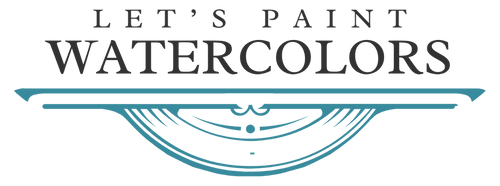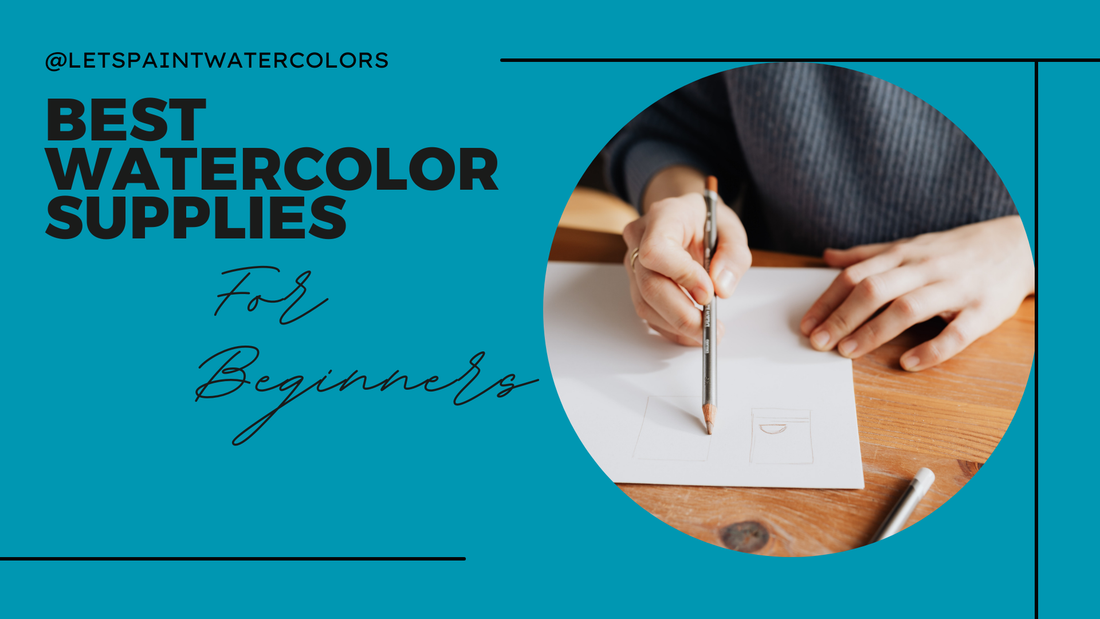Best Watercolor Supplies for Beginners: Everything You Need to Get Started
This post may contain affiliate links at no extra cost to you. Please read our full disclosure here to find out more.
Watercolor Supplies for Beginners
If you’re just dipping your brushes into the watery world of watercolor, let me be the first to welcome you. I’ve been at this for over 35 years, and while I still make the occasional splash where I shouldn’t (looking at you, coffee cup), I’ve learned a thing or two about what watercolor supplies for beginners actually matter when you're starting out.
Whether you’ve just subscribed to my YouTube channel Let’s Paint Watercolors (cheeky plug, I know) or you’ve stumbled in here thanks to a search for “why is watercolor so hard,” this guide is for you.
1. Start with the Paper – Arches 140lb Rough
Let’s get one thing straight: not all paper is created equal. If you’re using cheap paper, your paint will bleed, buckle, and betray you faster than you can say “wet-on-wet.”
Arches 140lb Rough is my go-to recommendation for beginners. Why?
-
It's 100% cotton—so it drinks up water, no stretching needed.
-
The rough texture gives lovely character to your washes.
-
And most importantly, it behaves. You need that when you’re starting out.
Trust me. I've tried to cut corners in my early days. The paper fought back. I lost.
2. Paints: Winsor & Newton (Just Four Tubes, That’s It!)
You don’t need 47 colors to start. You need four solid ones.
That’s right. Just four!
Here’s the palette I recommend (and use myself more often than not):
From these, you can mix an astonishing range of colors. I made a handy chart to prove it (and yes, you’ll want to bookmark this bit):
My Go-To Color Mixing Chart

🎨 Pro tip from an old brush jockey: Always mix a little more than you think you’ll need. Matching colors later is like trying to find your socks after a plein air painting trip—frustrating and usually unsuccessful.
3. Brushes: Start with a few rounds and flats
You don’t need a brush that costs more than your rent. But you do need a decent one that holds water, keeps a point, and doesn’t shed like a nervous cat.
I like Fuumuui brushes. Affordable, reliable, and oddly fun to say out loud.
-
Grab a few rounds (sizes 12-2) for washes, detail, and line work.
-
A couple of flats for skies and bold shapes.Here's a set with a good selection that will get you started.

If you feel like splurging on one fancy brush, make it a round #8. That thing is a workhorse.
4. Sketching Gear: Pencil & Kneaded Eraser
Sketching before painting isn’t always required, but as you progress to more complicated pieces, it will help you plan out your compositions.
-
Use a 2H or HB pencil. Light touch. No gouging.
-
My favourite eraser? The Faber-Castell Kneaded Eraser. You can squish it into any shape. It lifts graphite like magic and won’t chew up your precious paper. Added bonus - It's cheap!

5. Tape That Paper Down
Unless you enjoy the thrill of watching your masterpiece curl like a potato chip, get yourself artist tape.
-
Use it to secure your paper to a board.
-
Bonus: you get a lovely clean border when you're done.
-
Double bonus: It makes you feel like you know what you're doing.
6. Palette with Deep Wells
Avoid those little paint trays. You want something with deep wells, like a proper mixing palette. Why?
-
You can really see the color you’re mixing.
-
More room = less mess.
-
Less mess = happier Bill (and probably a cleaner shirt).
I get asked which palette wells I use on my YouTube channel all the time. People seem to think they are muffin trays. Nope! They are these ones (click the pic to shop) ⬇️
7. Mason Jars – Two of Them, Please
Simple rule: One jar for dirty water, one for clean.

Why mason jars? Because they’re sturdy, they hold a good amount, and they make you feel like a rustic artisan even when you're just washing your brush.
✅ Supply Checklist for New Artists
Here’s your starter kit—all personally tested, approved, and occasionally abused by yours truly - I've added them all to my Amazon Storefront to make it easy for you to view them all - Click Here
-
Arches 140lb Rough Watercolor Paper
-
Winsor & Newton Paints: Alizarin Crimson, Ultramarine Blue, Cadmium Yellow, Sap Green
-
Fuumuui Round and Flat Brushes
-
HB or 2H Pencil
-
Faber-Castell Kneaded Eraser
-
Artist Tape
-
Deep-Well Palette
-
Two Mason Jars
Thanks, Bill, but how much will all this cost me? Well, if my maths is correct, the above items come to $144 in total, so not too expensive and they will last you a long time (the Winsor and Newton paints really do stretch a long way).
Ready to Paint?
There you have it, my friend. That’s everything you need to start watercoloring without the drama. You’ll learn, you’ll make mistakes (I still do), and you’ll get better every time.
Now, go tape down some Arches paper, fill those jars, and let’s paint watercolors. I’ll be right there with you—on YouTube, and in spirit.
Happy painting,
– Bill





